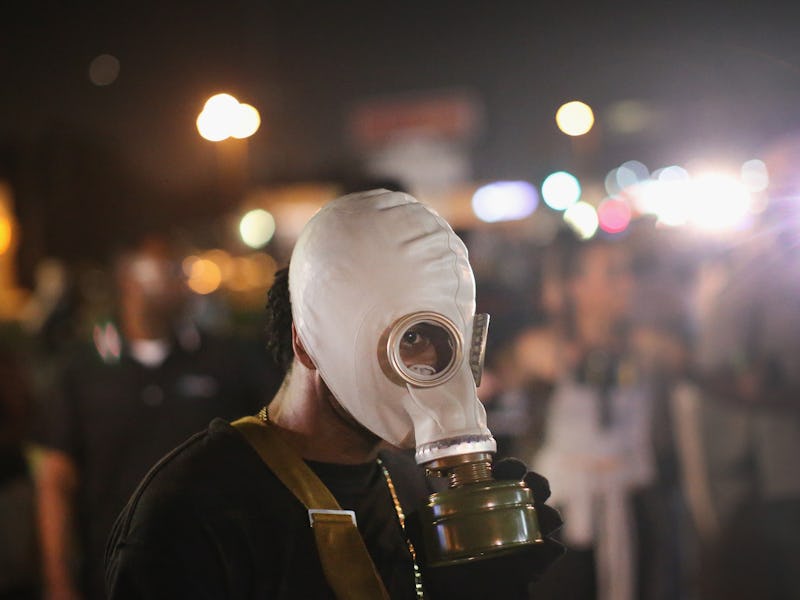Tear Gas Drones: Coming to a Protest Near You?
We need to regulate remote-controlled non-lethal protest drones.

It’s been a year since people all over the world united to protest the deaths of Mike Brown and Eric Garner, two unarmed black men killed by police in Missouri and New York, respectively, in separate cases. (The officers in each situation weren’t indicted.) The protestors were met with heavily armed, militarized police forces that used tear gas to disperse crowds.
The Black Lives Matter civil rights protests were the latest example of police using tear gas on activists, and while police didn’t use drones to do it (the classic method is canister-chucking and protestors defiantly chucking them back), it’s high time we figured out what to do with remote-controlled dispersal of protest-control chemicals. That’s the case put forth in a new report by Bradford University and the UK-based Omega Research Foundation.
This is a reality debated for longer than you might think — the paper points to places like Montgomery County, Texas, where in 2011 the sheriff was weighing the merits of equipping a Shadow Hawk unmanned aerial system with rubber bullets and tear gas.
The major concern, as ORF researcher Michael Crowley and colleagues lay out, as it always is with weaponized tech, is that adoption will outpace regulation. To that end, the ORF and the Bradford Non-lethal Weapon Research Project are calling on the Organization for the Prohibition of Chemical Weapons — the group that monitors parties to the Chemical Weapons Convention treaty — to review riot-control chemicals. Because the CWC more expressly focuses on warfare, riots have been left to the side, but the paper argues it’s within the group’s bounds to determine if the Convention prohibits aspects of remote-controlled chemical riot control.
Currently, there are legal barriers to weaponizing drones with lethal force in the United States. Even where non-lethal drone weapons are allowed, institutional obstacles remain, as Popular Science pointed out in response to rumors of North Dakota police using Taser drones. But we don’t know how this will pan out in other states, and what we do know for sure is that drones can sting, whether it’s with tear gas or electricity: